DINA GILBERT USIC DIRECTOR & C ONDUCTO R
Discover
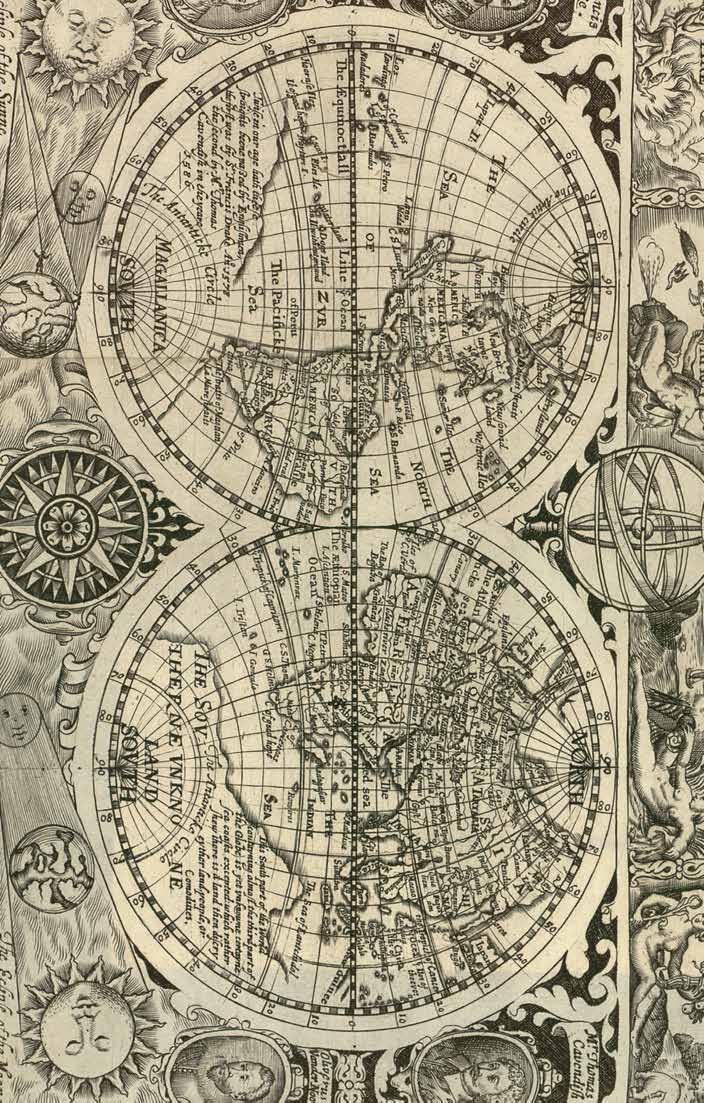
2025-2026 SEASON
119 TH YEAR
OCTOBER - JANUARY



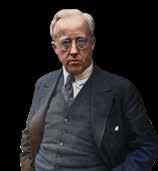
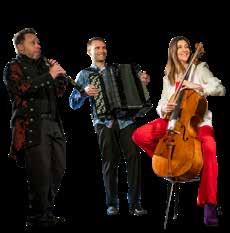

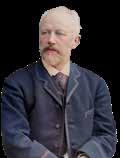
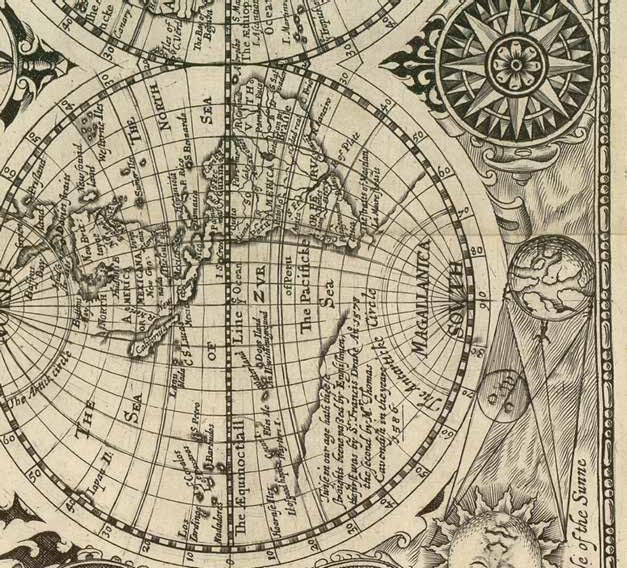

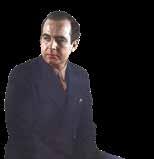
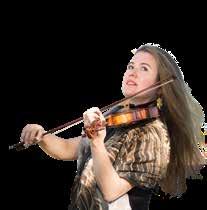

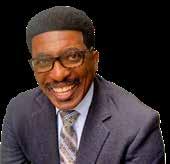
A Letter from the Music Director
We are embarking this season on a quest: to listen more deeply, to stretch our wings, and to imagine new possibilities beyond what we thought was expected. At its heart, this season is about connection — connection with our past, our community, new voices, and the world beyond.
We open with wonder. In The Planets, we pair Caroline Shaw’s The Observatory and Samy Moussa’s Elysium with Holst’s iconic work — expansive, majestic, and still as captivating as ever. With the Walla Walla Choral Society joining us, it’s an invitation to look upward, outward, and inward all at once.
For those who love music that dances between genres, Quartetto Gelato comes to Walla Walla with their infectious blend of classical and world music — virtuosity with a wink and a smile.
Strings of Passion, featuring violinist Lara St. John — who also co-composed Milica Paranosic’s Roma Suite — invites us into emotional terrain both tender and intense, alongside Barber’s Violin Concerto and Tchaikovsky’s Pathétique
We believe in music made visible and brought to life. In Heartbeat, the rhythms of Latin America and Afro-Cuban fusion pulse through works by Gabriela Lena Frank, Rodion Shchedrin, and Guido LópezGavilán, with Grammy-winning duo OKAN, whose music tells stories of love, heritage, and identity.
In Still We Sing, we are honored to collaborate with the Mid-Columbia Mastersingers and guest conductor Dr. André Thomas, pairing Mozart’s Requiem with Dr. Thomas’s own Mass: A Celebration of Love and Joy. This powerful blend of classical tradition and gospel energy speaks to unity, remembrance, and joy.
We also celebrate reimagined artistry. The Hip-Hop Orchestra Experience brings Ensemble Mik Nawooj together with Walla Wallans Rodney Outlaw and the 5th Element Project, inviting us to re-hear Mozart, Bach, and Beethoven through rhythm, word, and contemporary culture.
Throughout the season, we shine a light on composers whose stories deserve to be heard. In Journeys, you’ll hear Emilie Mayer’s Overture No. 2, Christian Colberg’s Viola Concerto (with the composer as soloist), and Mendelssohn’s “Scottish” Symphony — works shaped by place, imagination, and resilience. This program also includes new music from our SPARK! young composers, reminding us that the creativity shaping tomorrow stands alongside the voices of the past and present.
That same spirit of discovery guides Wild Symphony, a family concert that invites our youngest listeners into the world of orchestral sound with humor, storytelling, and color.
We conclude with Colors Ignited, a vibrant exploration of musical character. This program features Stravinsky’s Petrushka, continuing our multi-year journey through his works, alongside reimagined Bach featuring accordionist Hanzhi Wang, and works by Lili Boulanger and Jessica Meyer — a celebration of color, transformation, and the expressive range of the orchestra.
This season is, above all, a celebration of connection — between composer and performer, tradition and innovation, stage and audience. Whether through the grandeur of Holst, the soul of gospel, or the pulse of Latin rhythms, the musicians and I hope to stir something in you: curiosity, memory, joy, or simply the pleasure of being moved.
Thank you for continuing to walk this path with us. We can’t wait to share it with you!
Dina Gilbert Music Director & Conductor
Dina Gilbert
French-Canadian conductor Dina Gilbert is passionate about connecting with audiences of all ages and broadening their appreciation of orchestral music through innovative collaborations. This commitment, along with her extensive knowledge of repertoire, has shaped her career and the orchestras she has led. Regularly invited to conduct in Canada and overseas, she attracts critical acclaim for her energy, presence on the podium, and expressive music-making.
From 2013 to 2016, Dina served as assistant conductor of the Orchestre symphonique de Montréal under Maestro Kent Nagano, also assisting notable guest conductors including Zubin Mehta and Sir Roger Norrington. She is currently Music Director & Conductor of the Walla Walla Symphony, Principal Conductor of Les Grands Ballets Canadiens, and Associate Conductor of the Orchestre symphonique de Montréal.
Dina has conducted leading Canadian orchestras such as the Toronto Symphony, the Orchestre symphonique de Montréal, the Orchestre métropolitain, the Orchestre symphonique de Québec, as well as orchestras in the United States, Colombia, Spain, France, and Sinfonia Varsovia for a series of concerts in Japan.
Her curiosity for non-classical musical genres and commitment to making classical music more accessible to everyone have sparked collaborations with the Orchestre Philharmonique de Radio France and the Orchestre national de Lyon in several Hip-Hop Symphonic programs featuring renowned artists I AM, MC Solaar, Youssoupha and Bigflo & Oli. She has also led symphonic fusions with renowned metal group Voïvod, conducted the world premiere of the film The Red Violin with orchestra and soloist Lara St. John, and has conducted the North American premiere of film The Artist in concert.
As the founder and artistic director of the Ensemble Arkea, a Montreal-based
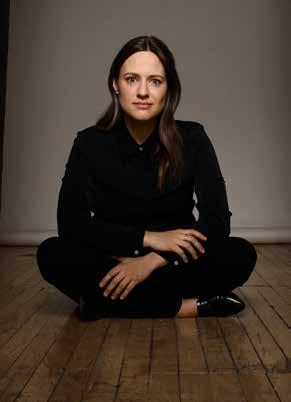
chamber orchestra, Dina has premiered more than thirty works from emerging Canadian composers. She is equally committed to music education, reaching thousands of children through her interactive Conducting 101 workshops.
Highlights of the 2025–2026 season include subscription concerts with the Orchestre symphonique de Montréal; debuts with the Berkeley Symphony, the Kitchener-Waterloo Symphony, and the Opéra National de Bordeaux; and performances with the Orchestre national d’Île-de-France in the greater Paris region, culminating in a concert at the Philharmonie de Paris.
Dina earned her doctorate from the Université de Montréal and polished her skills in masterclasses with Kenneth Kiesler, Pinchas Zukerman, Neeme Järvi, and the musicians from the Kritische Orchester in Berlin. Awarded the Opus Prize of “Découverte de l’année” in 2017, she has also received support from the Canada Arts Council, the Conseil des arts et des lettres du Québec, and the Père-Lindsay Foundation.
Walla Walla Symphony Endowed Chairs
Maestro Chair
Richard, Helene, Jay and Bryan Jaffe
Robert, Carol, Jonathon and Eric Jaffe
Violin I
Concertmaster: Henrietta Baker Kennedy
Memorial Chair
Mary Ann Ringgold Memorial Chair
Carroll N. Baker Memorial Chair
Dayl B. Graves Memorial Chair
Frances E. Casper Memorial Chair
Beulah K. Scheece Memorial Chair
Violin II
Principal: Robert C. and Iris Myers and Agnes V. Little Memorial Chair
Viola
Principal: Walter and Elizabeth Egg Memorial Chair
Dorothy and James Swayne Memorial Chair
Cello
Principal: Grace Lazerson Memorial Chair
Harold E. Crawford Family Chair
Mary Hooper Meeker Memorial Chair
Bass
Principal: Don and Claudia Tucker Chair
Flute
Principal: Louis B. Perry Family Chair
Oboe
Principal: Emma Jane Brattain Memorial Chair
Clarinet
Principal: William Tugman Memorial Chair
Bassoon
Principal: Helen Shepherd Trust Memorial Chair
French Horn
Principal: Coffey Communications Chair
Trumpet
Principal: Father Joseph Da Lio Memorial Chair
Trombone
Principal: Dr. Philip and Leona Siegel Memorial Chair
Timpani
Principal: Jack Williams Memorial Chair
Percussion
Principal: Mike and Sue Gillespie Chair
Piano
Perla Hill Simon Chair
Harp
Principal: Edward Foster Memorial Chair
2025-2026 Walla Walla Symphony Board of Directors
Jackie Wood, President
Tricia Rice, Vice-President
Jack Iverson, Treasurer
Cynthia Westerbeck, Secretary
Mark Brucks
Andrew Dankel-Ibañez
Helen Kim
Albert Marshall
Pedrito Maynard-Reid
Richard Middleton-Kaplan
Chris Otis
Lori Parnicky
Lacey Perry
Lucia Ramirez
Levi Waggoner
2025-2026 Walla Walla Symphony Staff
Executive Director
Stephanie Helleckson
General Manager
Leah Davis
Patron Relations Manager
Rachel Condie
Program Manager
Emily James
Music Director & Conductor
Dina Gilbert
Youth Orchestra Conductor
Bruce Walker
Volunteer Coordinator
Susan Greene
Music Librarian
Laura Rose-Grabinski
Teaching Artists
Naima Corea
Stefanie Crumpacker-Flerchinger
Rebecca Fuquay
Lori Parnicky
Sara Pinkerton
Chris Schulz
Kristin Vining
Walla Walla Symphony Personnel 2025-2026
Dina Gilbert, Music Director & Conductor
Violin
Viet Block*, assistant concertmaster
Liubov Brunton
Caleb Condie*
Amy Dodds*, principal second
Hadley Gibbons
Levi Golan
Stephanie Helleckson
Dalene Johnson*
Chantell Lopez*
Heather Morado
Vanessa Moss*, concertmaster
Craig Nelsen*
Grace Palmer Dostal
Reynaldo Patiño
Nina Powers
Tricia Rice*
Samuel Schafer*
Amanda Spires
Alyssa Stremcha*
Becky Wiessner*
Dan Wing
Ken Wright
Viola
Lyn Ritz*, acting principal
Caleb King*
Hans Klein*
Adeline Kovell
Emily Kurlinski Haun*
Angela Schauer*
Dan Wing
Cello
Edward Dixon*, principal
Lauren Edmondson*
Benjamin K. Gish*, assistant principal
Olga Grigoryan
Amy Hanson
Annie Harkey Power
Bruce Walker*
Bass
Dianna Lysgaard
Marella McGreal*
Joshua Skinner*, principal
Julie Woods*, assistant principal
Phil Wright
Flute
Leonard Garrison*, principal
Lori Parnicky*
Sophia Tegart
Oboe
Pablo Izquierdo*, principal
Karen Strand
Camilla Yoder
Ryan Zwahlen
Clarinet
Katie Rice
Shannon Scott*, principal
Katsuya Yuasa
Bassoon
Kirsten Boldt-Neurohr*
Mark Eubanks
Ryan M. Hare*, principal
Horn
Martin King*, acting principal
Cassidy Fairchild
Dean Kravig
Rebekah Schaub*
Kim Snow*
Kyli White
Trumpet
William Berry*, principal
Kate Jackson
Maegan Ley
James Smock*
*Denotes core orchestra membership
Trombone
Dave Glenn*, principal
Dick Counsell*
Bill Gilbert*
Tuba
Torrey Lawrence*, principal
Chris Dickey
Harp
Chelsea Spence*, principal
Miriam Gentle
Keyboards
Karlyn Bond
Kraig Scott
Timpani
Christopher Wilson*, principal
Andrew Spencer
Percussion
Joshua Gianola*, principal
Warren Murray
Marybeth Norby
Aaron Rausch
Andrew Spencer
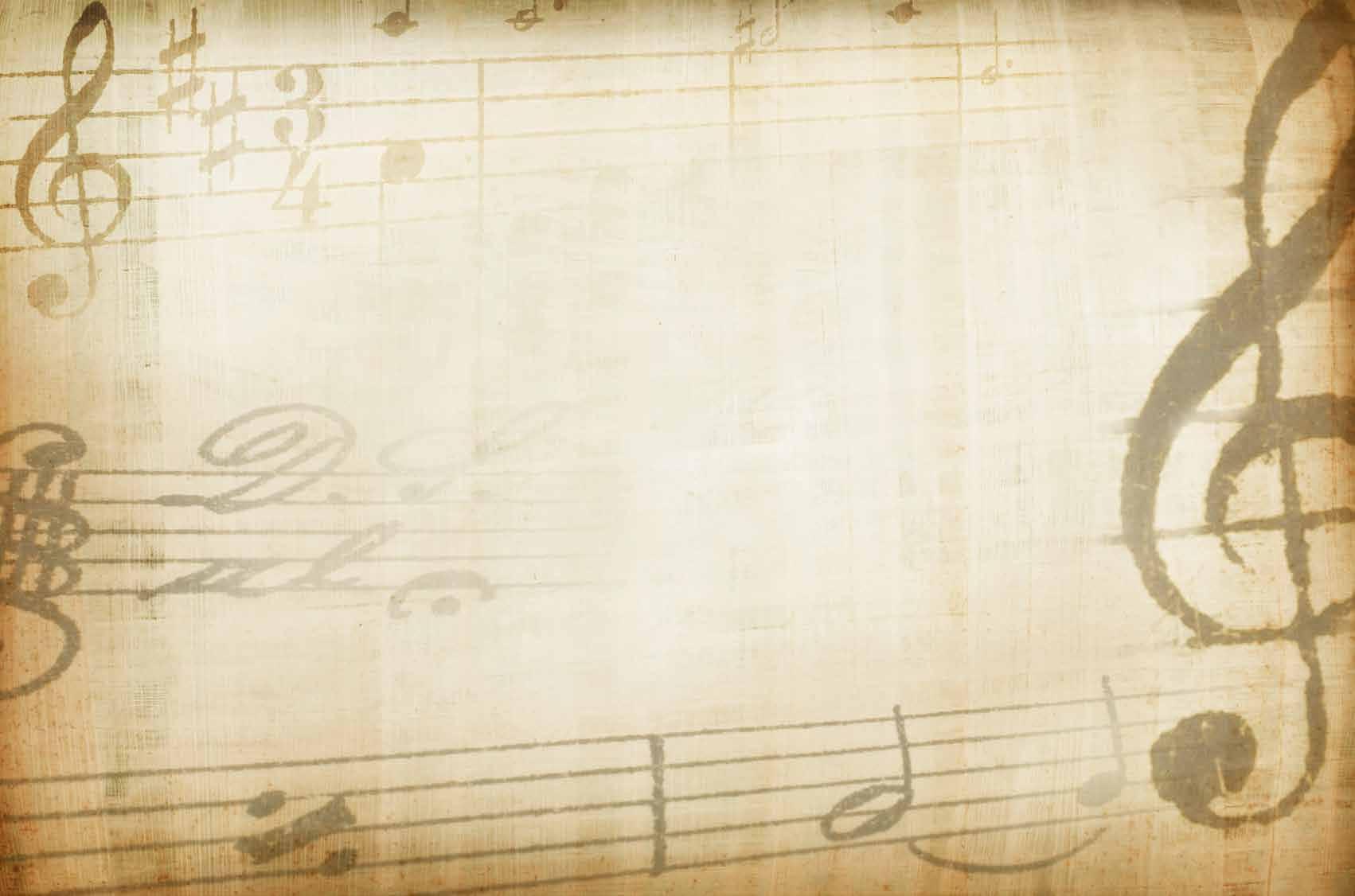
WE HELP OUR CLIENTS BE FAMILY HEROES
After trying to fit in a lot of music vocabulary into a catchy advertisement, I decided to call it quits. I realized that no one likes an overly clever attorney.
But after trying to fit in the word jazzy into legal services, I thought maybe I was trying too hard.
It’s sometimes the simple approach that wins the day.
We’ve been helping families like yours for decades to get great results. We work to find quick and peaceful solutions to long and difficult problems that bring life back to families.
So that you can improve the lives of your loved ones for the next generation and future generations.
We specialize in helping families through divorce, adoption, estate planning, probate and a host of other issues families face.
We’re proud of the work we’ve done and plan to be here for the community for years to come.
Find us at www.pnwfamilylaw.com, on YouTube, on Facebook, or visit our office and see what we can do for you.
About the Walla Walla Symphony
OUR MISSION
The Walla Walla Symphony delights and challenges our community by providing live orchestral performances and opportunities for learning about music.
OUR VISION
We will cultivate a growing appreciation for symphonic music in Walla Walla by attracting enthusiastic audiences to programs of the highest artistic quality and by providing wonderful experiences and deep and rich education programs for the benefit of the Walla Walla community.
We strive for inclusion, diversity, and equity as we support and promote orchestral music, artistry, and music education in our community. We bring these values into our planning, dialogue, decision-making, programming, outreach, staffing, assessments, and study of emerging new practices.
OUR COMMITMENT TO DIVERSITY, EQUITY, INCLUSION, AND BELONGING
The Walla Walla Symphony is committed to centering relationships with our communities as we work to build connections through music. We envision creating welcoming spaces that offer a sense of belonging where all are valued regardless of age, race, gender, religion, sexual orientation, ability, economic status, political affiliation, or education. We believe that orchestral music is more relevant and alive when it honors tradition while embracing new ideas. We strive to work towards unraveling a history of exclusivity prevalent in classical music and we will continue our pursuit of diversity, equity, inclusion, and belonging through learning, listening, and engaging.
We recognize that, at present, neither the musicians, the audience, the board, nor the staff of the Walla Walla Symphony fully reflect the diversity that is present in our valley. We want to transform our relevance to the diverse communities we serve.








THE PLANETS
Tuesday, October 7, 2025 | 7 p.m.
Cordiner Hall
Samy Moussa Elysium for Orchestra
Caroline Shaw The Observatory
INTERMISSION
Gustav Holst The Planets, Op. 32
I. Mars, the Bringer of War
II. Venus, the Bringer of Peace
III. Mercury, the Winged Messenger
IV. Jupiter, the Bringer of Jollity
V. Saturn, the Bringer of Old Age
VI. Uranus, the Magician
VII. Neptune, the Mystic Walla Walla Choral Society Robb Harrison, artistic director
SAMY MOUSSA
Born June 1, 1984, in Montréal, Québec, Canada
Elysium for Orchestra (2021)
Last WWS Performance: First performance at tonight’s concert
Approximate length: 13 minutes
This work was premiered on September 18, 2021, in Barcelona, Spain, at the Basílica de la Sagrada Família by the Vienna Philharmonic conducted by Christian Thielemann. It is scored for piccolo, two flutes, two oboes, two clarinets, two bassoons, contrabassoon, four horns, three trumpets in C, optional piccolo trumpet, two trombones, bass trombone, tuba, timpani, percussion, and strings.
“Born in Montréal in 1984 and now based in Berlin, composer-conductor Samy Moussa
is one of today’s leading composers. Moussa’s work has been performed by many of the world’s most prestigious orchestras including Royal Concertgebouw Orchestra, London Symphony Orchestra, and Los Angeles Philharmonic. He has also featured as Artist in Residence at Toronto Symphony Orchestra and works closely with Orchestre Symphonique de Montréal. The 2022/23 season saw the world premiere of his Trombone Concerto Yericho with Orchestre National de Lyon and trombonist Jörgen van Rijen, as well as the European premiere of his Second Symphony with the BBC Scottish Symphony Orchestra at the BBC Proms 2023. Moussa also appeared as conductor with Musikkollegium Winterthur and the Edmonton Symphony Orchestra. Highlights of the 2023/24 season included the world premieres of Antigone, an oratorio for female chorus and orchestra conducted by Erik Nielsen with Dutch National Opera & Ballet, and Adgilis Deda,
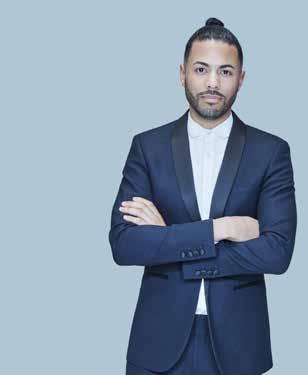
a hymn for orchestra with the Pittsburgh Symphony Orchestra conducted by Manfred Honeck.”
Elysium dates from 2021 and was a joint commission by the Vienna Philharmonic, Vancouver Symphony Orchestra, Festival de Lanaudière, Royal Scottish National Orchestra, and BBC Scottish Symphony Orchestra. Annotator Thomas May’s description of the work appears on the composer’s official website:
“The title Elysium reflects Moussa’s fascination with ancient Greek and Classical sources. Also known by the epithet “the Elysian Fields,” Elysium refers to a paradisiacal realm, distinct from the Underworld in Greek mythology,
that offered a blissful afterlife to heroes and those favored by the gods. Its idyllic promise is described by Homer and Hesiod and echoes through the epics of Virgil and Dante down to the present — even occurring in Beethoven’s Ninth Symphony (in his setting of Schiller’s description of Joy as “daughter of Elysium”).
“Moussa, however, insists on steering clear of any Romantic idealization of the Hellenic world. He particularly admires the work of the pre-Socratic philosophers (most of which survives only in fragmentary form) and singles out a text on the afterlife by Empedocles, a remarkable fifth-century BCE pioneer of natural philosophy who lived in what today is Sicily. Moussa notes that he interprets Empedocles’s image of Elysium “as the ultimate reward for an ethical life” — a reward no longer limited to an elite of god-favored heroes — as “a metaphor for a beautiful life, for a life welllived on this planet.”
“From Empedocles’s large-scale poem known as Purifications, which treats religious and ethical topics, Moussa cites this fragment, in which Elysium is envisioned as a final escape from the cycle of reincarnation:
“… But, at the last, they appear among mortal men as prophets, songwriters, physicians, and princes; and thence they rise up as gods exalted in honor, sharing the hearth of the other gods and the same table, free from human woes, safe from destiny, and incapable of hurt.”
Biography and program note courtesy of the composer

CAROLINE SHAW
Born August 1, 1982, in Greenville, North Carolina
The Observatory (2019)
Last WWS Performance: First performance at tonight’s concert
Approximate length: 16 minutes
This work was premiered August 27, 2019, by the Los Angeles Philharmonic conducted by Xian Zhang. It is scored for piccolo, two flutes, two oboes, two clarinets, bass clarinet, two bassoons, contrabassoon, four horns, two trumpets, three trombones, tuba, timpani, percussion, and strings.
Caroline Shaw is a musician who moves among roles, genres, and mediums, trying to imagine a world of sound that has never been heard before but has always existed. She works often in collaboration with others, as producer, composer, violinist, and vocalist. Caroline is the recipient of the 2013 Pulitzer Prize in Music, multiple Grammy Awards, an honorary doctorate from Yale, and a Thomas J. Watson Fellowship.
Recent projects include the score to Fleishman is in Trouble (FX/Hulu), vocal work with Rosalía (MOTOMAMI), the score to Josephine Decker’s The Sky Is Everywhere (A24/Apple), music for the National Theatre’s production of The Crucible (dir. Lyndsey Turner), Justin Peck’s Partita with New York City Ballet, a new stage work LIFE (Gandini Juggling/ Merce Cunningham Trust), the premiere of Microfictions Vol. 3 for New York Philharmonic and Roomful of Teeth, a live orchestral score for Wu Tsang’s silent film Moby Dick co-composed with Andrew Yee, two albums on Nonesuch (Evergreen and The Blue Hour), the score for Helen Simoneau’s dance work Delicate Power, tours of Graveyards & Gardens (co-created immersive theatrical work with Vanessa Goodman), and tours with So Percussion featuring songs from Let The Soil Play Its Simple Part (Nonesuch), amid occasional chamber music appearances as violist (Chamber Music Society of Minnesota, La Jolla Music Society).
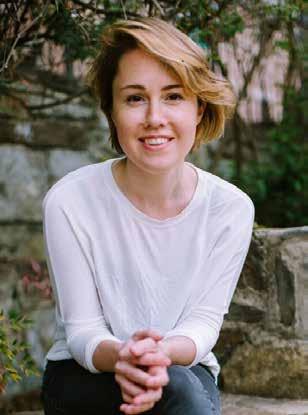
Caroline has written over 100 works in the last decade for Anne Sofie von Otter, Davóne Tines, Yo-Yo Ma, Renée Fleming, Dawn Upshaw, Los Angeles Philharmonic, Philharmonia Baroque, Seattle Symphony, Cincinnati Symphony, Aizuri Quartet, The Crossing, Dover Quartet, Calidore Quartet, Brooklyn Rider, Miro Quartet, I Giardini, Ars Nova Copenhagen, Ariadne Greif, Brooklyn Youth Chorus, Britt Festival, and the Vail Dance Festival. She has contributed production to albums by Rosalía, Woodkid, and Nas. Her work as vocalist or composer has appeared in several films, TV series, and podcasts including The Humans, Bombshell, Yellowjackets, Maid, Dark, Beyonce’s Homecoming, Tár, Dolly Parton’s America, and More Perfect. Her favorite color is yellow, and her favorite smell is rosemary.
Shaw described the inspiration for The Observatory:
“One morning on a visit to Los Angeles, I hiked up the hill to Griffith Observatory, to clear my head before returning to work on this piece for orchestra. I looked down at the city with all its curving road patterns, and up at the sky, which has been observed and wondered about
since the beginning of consciousness. I had been thinking about my friend Kendrick Smith, a cosmologist at the Perimeter Institute who is at the cutting edge of the ancient tradition of stargazing. Kendrick constructs new conceptual frameworks for analyzing data collected by the CHIME radio telescope — developing ways of looking at the universe. (Maybe that is also what music can be.) There was something about writing for a full symphony orchestra that had made me think about sci-fi films. I love the way epic tales of the beyond can zoom in and out, using imagined alternative universes to tell stories about ourselves on multiple scales at once. And I love how music in these films carves and colors our attention to those worlds (in their various permutations).
“The Observatory features some very large chords, and some very large spaces. Motives appear in diminution
and augmentation simultaneously, like objects in orbit at different phases. Patterns in the foreground occasionally yield to patterns hovering in the background (including brief references to Strauss’ Don Juan, Bach’s Brandenburg Concerto No. 3, Sibelius’ Symphony No. 2, Brahms’ Symphony No. 1, and to the arpeggios played on chimes to summon audiences to their seats at formal orchestra concerts). There is celebration and criticism of systems, amid moments of chaos and of clarity. The very large chords return at the end, but their behavior is not the same as when we began.
“I’d like to dedicate The Observatory to Xian Zhang, the brilliant conductor who premiered this work, and whose generosity, wisdom, and energy is something that I aspire to in my own life in music.”
Biography and program notes courtesy of the composer.

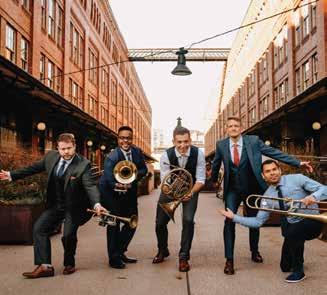





GUSTAV HOLST
Born September 21, 1874, in Cheltenham, United Kingdom
Died May 25, 1934, in London, England
The Planets, Op. 32 (1914-1917)
Last WWS Performance: May 8, 2018
Approximate length: 55 minutes
This work was premiered on September 29, 1918, before a private audience in the Queen’s Hall, London. It is scored for two piccolos, three flutes, bass flute, three oboes, bass oboe, English horn, three clarinets, bass clarinet, three bassoons, contrabassoon, six horns, four trumpets, two tenor trombones, bass trombone, tenor tuba, bass tuba, timpani, percussion, two harps, celesta, organ, and strings. A women’s chorus sings in the last movement.
Primarily recognized as a composer of strangely approachable — yet austere — works, Gustav Holst was an able composer and talented orchestrator. Having composed since his teens, Holst was accepted by the Royal College of Music where he was a classmate of Ralph Vaughan Williams, who deeply influenced his musical style. He developed an interest in Hinduism, studying its literature and the Sanskrit language. Holst became an active educator, holding positions at St. Paul’s School for Girls and Morley College.
Today’s audiences are often surprised to learn that he composed other significant works in addition to his immensely popular

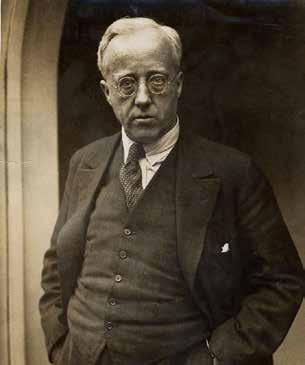
suite, The Planets. However, he created works for nearly every musical genre, including many fine choral settings of English folksongs, several notable pieces for wind band, and numerous stage works (including the Sanskrit opera Savitri). Although Holst was a contemporary of many of the most experimental composers of the twentieth century, he was a proponent of melodic music and found that an approachable musical language could be as profound as more abstract sounds. For this reason, he was always at odds with the more dissonant (and critically accepted) music that came from Schoenberg and his disciples in Vienna.
Holst’s The Planets reflects the composer’s interest in astrology, not astronomy, and the character of the seven movements reflects the astrological personality of the planets included. It should be mentioned here that Holst chose to exclude Earth. Pluto, once considered to be a planet, would not be discovered for a dozen years after the premiere of Holst’s work. Regardless of the mechanics, Holst found the subject to be useful, but had reservations about the forces required to pull it off. World War I had just begun when he completed the Mars movement, itself a portrait of war, in 1914. As musicians were scarce and his work required a huge orchestra, Holst saw no reason to rush and
took more than two years to complete it. The music itself is fascinating, but nearly everything that needs to be known for enjoyment and edification lies in the titles, as each movement is a portrait of an astrological planet. “Mars, the Bringer of War” portrays conflict with the familiar and relentless ostinato rhythm, repeated ad infinitum to great effect. “Venus, the Bringer of Peace” is a lyrical and touching counterpart. The fleet-footed “Mercury, the Winged Messenger” acts as a scherzo with its rapid runs and silvery textures. “Jupiter,
the Bringer of Jollity” brims with the spirit of British pomp and pageantry. Holst’s final planets are much more austere and mystical in character. “Saturn, the Bringer of Old Age” traces the stages of life from birth through death. “Uranus, the Magician” uses orchestral sleight-of-hand to depict the conjuring of spells. Holst’s finale is the meditative “Neptune, the Mystic,” which ends with a wordless women’s chorus fading into eternity.
© 2025 Orpheus Music Prose & Craig Doolin, www.orpheusnotes.com


QUARTETTO GELATO
Saturday, November 15, 2025 | 7 p.m.
Cordiner Hall
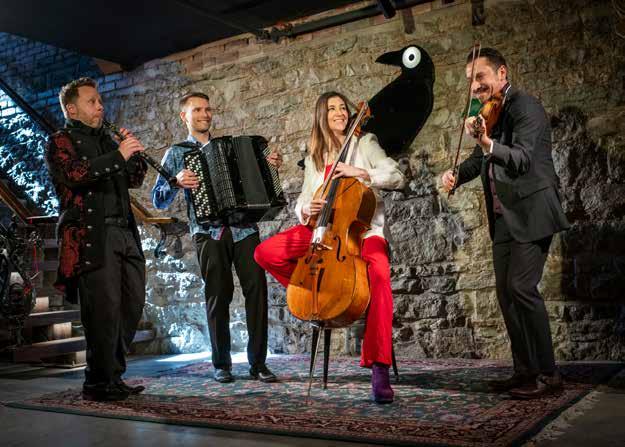
Virtuosic showpieces and romantic ballads, blazing gypsy tunes and forgotten chestnuts, all brought to life with multiinstrument mastery: This is Quartetto Gelato — a popular and highly unusual classical quartet.
With sold-out performances in New York, Washington, Los Angeles, London, Tokyo, Hong Kong, and elsewhere, this dazzling ensemble has enchanted audiences and critics worldwide with its exotic blend of musical virtuosity, artistic passion, and humor. With a performance repertoire that spans the globe and includes classical masterworks, engaging vocals, and the sizzling energy of tangos, gypsy, and klezmer songs, the group’s theatrical stage presence and relaxed humor establish an intimate rapport with audiences worldwide.
Quartetto Gelato’s international career was launched when they won the coveted title of NPR Performance Today’s “Debut Artist of the Year.” The group’s first DVD, Quartetto Gelato: A Concert in Wine Country, was picked up by PBS throughout the U.S. in 2007 and is still broadcast regularly. The group is regularly heard on CBC, Classical 96.3 FM, NPR, PRI, and NUR networks, not to mention the soundtrack of the Hollywood film Only You, starring Robert Downey Jr. and Marisa Tomei. At the 2010 INDIE Awards, Quartetto Gelato was honored as Best Classical Ensemble and achieved unique global reach when Canadian astronaut Dr. Robert Thirsk chose their first two CDs to take on board during his NASA flight on the space shuttle Columbia, to be literally heard around the world!
Quartetto Gelato released a highly successful first CD in 1994. Subsequent recordings such as Neapolitan Café (2001) and Musica Latina (2009) showcase the ensemble’s flair for imaginative international themes, while Travels the Orient Express (2004) features music associated with stops along the route of the famous train. In 2010, the quartet recorded a Christmas CD and their 9th disc, All Original – 100% Canadian, featuring
works written for the group by Canadian composers that highlight their signature style. In 2021, QG released their 10th album, Tasty Tunes, which features a blend of fun, eclecticism, international flavors, multi-instrumentation, vocals, and superb musicianship.
Quartetto Gelato would like to acknowledge the generous support of FACTOR and the Canada Council for the Arts.
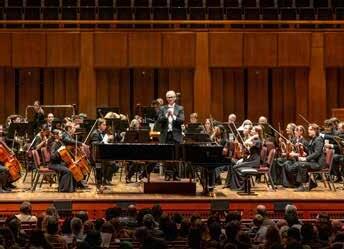
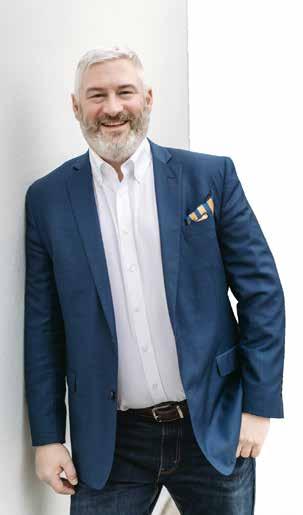
(509) 527-2561.
STRINGS OF PASSION
Tuesday, December 2, 2025 | 7 p.m.
Cordiner Hall
Made possible by the Katherine and Walter Weingart Guest Artist Endowment
Pyotr llyich Tchaikovsky
Milica Paranosic/Lara St. John
Lara St. John, violin
Samuel Barber
Lara St. John, violin
Symphony No. 6, “Pathétique”
I. Adagio — Allegro non troppo
II. Allegro con grazia
III. Allegro molto vivace
IV. Adagio lamentoso
Roma Suite (Premiere)
I. Djelem Djelem
II. Opa Cupa
III. Maruška (Premiere)
Violin Concerto, Op. 14
I. Allegro
II. Andante
III. Presto in moto perpetuo
PYOTR ILYICH
TCHAIKOVSKY
Born May 7, 1840, in Votkinsk, Russia
Died November 6, 1893, in Saint Petersburg, Russia
Symphony No. 6 in B minor, Op. 74, “Pathétique” (1893)
Last WWS Performance: First performance at tonight’s concert
Approximate length: 46 minutes
This work was first performed on October 28, 1893, in St. Petersburg, conducted by the composer. It is scored for piccolo, three flutes, two oboes, two clarinets, two bassoons, four horns, two trumpets, three trombones, tuba, percussion, timpani, and strings.
By the late 1880s, Tchaikovsky had composed nearly all his most revered works — five of the six symphonies, the ballets Swan Lake and Sleeping Beauty, and most of his operas and chamber music. Since the mid-1870s, the wealthy widow Nadezhda von Meck had been his benefactress, providing him with an annual stipend of six thousand rubles on the condition that he would devote his energies to full-time composition. These were the brightest years of his life, but they were not to last.
In 1890 von Meck severed their relationship. Even though he no longer relied on her financial assistance, the world-famous composer sorely missed the emotional support he found through their many correspondences. For years he had suffered from depression over his failed monthlong marriage in the 1870s, his general insecurity, and his difficulty in coming to



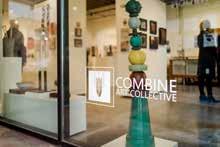
terms with his homosexuality. The loss of von Meck’s support sent Tchaikovsky into the deepest depression of his life. On his American tour of 1891 (during which he conducted his own Marche Solennelle at the opening concert for New York’s Carnegie Hall), he began to feel as if something was gravely wrong. By 1893, he had hit rock-bottom. On November 6 of that year, the composer died under mysterious circumstances. Although the official story has Tchaikovsky committing suicide by drinking a glass of unboiled water during a cholera epidemic, arsenic poisoning has never been ruled out. Tchaikovsky composed the Pathétique Symphony in the depths of his despair — a state of mind that somehow helped him immerse himself in the creative process. He completed the symphony in seven months’ time, between February and August of 1893. Tchaikovsky conducted the premiere on October 28 — just nine days before his unforeseen death.
The Pathétique is one of Tchaikovsky’s most soul-searching scores. He claimed that the work was a program symphony — one that tells a story — but refused to divulge the underlying program. One significant clue was found on a scrap of paper among the sketches for his Nutcracker ballet:
“Following is the plan for a symphony LIFE! First movement — all impulse, confidence, thirst for activity. Must be short (Finale death — result of collapse). Second movement love; third movement disappointment; fourth end with a dying away (also short)”
Although the final symphony does not follow this impromptu sketch directly, it is no doubt autobiographical to a large degree.
The opening bassoon solo sets a somber
mood before giving way to a more agitated incarnation of the same melody at the outset of the Allegro. After a brief respite with the lyrical second theme, the turmoil returns. The movement ends with gestures of emotional resignation. The second movement is the famous 5/4 waltz — lopsided but flowing and completely natural. The march of the third movement is the brightest emotional moment of the entire work but is more akin to Berlioz’s March to the Scaffold than Tchaikovsky’s ceremonial music. The final movement is tragic and melancholy and seems even more heartrending after the bright ending of the march. The intensity builds until the devastating moment near the end, when a gong sounds, followed by a brass chorale, and the symphony fades away into silence.
© 2025 Orpheus Music Prose & Craig Doolin, www.orpheusnotes.com




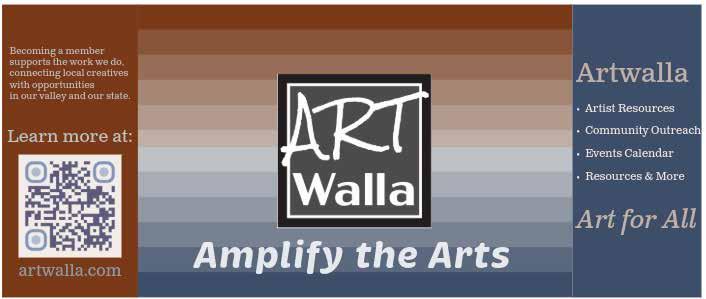
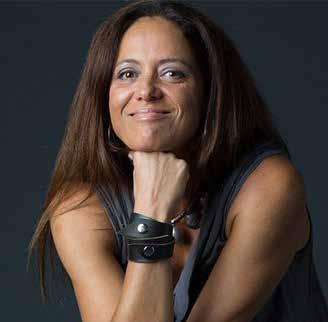
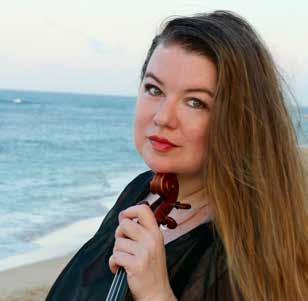
MILICA PARANOSIC
Born in Belgrade, Serbia
LARA ST. JOHN
Born April 15, 1971, in London, Canada
Roma Suite (Premiere)
Last WWS Performance: First performance at tonight’s concert
Approximate length: 12 minutes
Growing up and receiving my musical training in my native Serbia, I often encountered the expectation that composers should avoid drawing heavily from their own cultural heritage. This tradition was seen as too easy or natural, as if a composer’s identity should be defined by something more elevated or external.
I never adhered to that theory. Embracing my Serbian roots has been a liberating journey since my relocating to NYC, allowing me to explore and celebrate the rich traditions of Balkan music without judgment or hesitation.
This concerto is a product of that journey, born out of a collaboration with Lara, who shares my passion for Balkan music. Together, we have woven melodies and inspirations from Serbia, Macedonia, and the broader Balkan region, blending traditional influences with our original compositions.
The third movement, Maruška, is part of an evolving multi-movement work, a testament to the vibrant musical heritage that continues to inspire and connect us.
At its heart, Maruška is a playful love song. The singer calls out to Maruška, declaring passion and longing, sometimes teasing that she does not return his affection, other times promising that love (and marriage) will follow. The repetition of her name and the driving rhythm make the song feel hypnotic and celebratory — perfect for dancing and communal singing.
I wear a hat, smoke my pipe — I am a Romani man, I’m crazy about horses — everyone knows that.
But in my heart, I carry a pendant that rustles; When I open my eyes in the morning — there is Maruška.
Refrain: Maruška, Maruška — my living little flame, She knows how to love, she knows how to pray — she will be mine.
Other verses often describe simple Romani life — a hut for a home, music and dancing to drive away sorrow, and the promise of marriage when the spring grass turns green.
SAMUEL BARBER
Born March 9, 1910, in West Chester, Pennsylvania
Died January 23, 1981, in New York City, New York
Violin Concerto, Op. 14
Last WWS Performance: First performance at tonight’s concert
Approximate length: 25 minutes
The work was premiered on February 7, 1941, by the Philadelphia Orchestra under the direction of Arturo Toscanini with Albert Spalding as soloist. It is scored for solo violin, piccolo, pairs of woodwinds, horns, and trumpets, with timpani, percussion, piano, and strings.
The 1920s and 1930s were a period of transition for Samuel Barber. He spent the school year as a student at the Curtis Institute of Music in Philadelphia, and summers in Italy and Switzerland with his friend and fellow composer Gian Carlo Menotti. Summers there allowed Barber to escape the tensions of his studies and a city that he felt was musically confining. He spent a large portion of his time swimming, bicycling, shopping, playing tennis, and composing, which came much more readily to him when combined with leisure activities. Barber’s career was well underway, due largely to Artur Rodzinski’s performance of his Symphony No. 1 at the 1937 Salzburg Festival and Eugene Ormandy’s premieres of the First Essay for Orchestra and the Adagio for Strings the following year.
That such fame would grace a native Philadelphian who attended a Philadelphia Conservatory certainly resonated among the elite of the city. One onlooker was Samuel Fels, the wealthy manufacturer of Fels Naphtha Soap, who came to Barber with a commission. Fels’ adopted son, the Russian-born violin prodigy Iso Briselli, was respected in the music world, having performed as soloist with the Philadelphia Orchestra on several occasions, and wanted an original work written for his exclusive use. Barber completed the first two movements in Switzerland in 1939 and sent them to Briselli. Traditional accounts relate
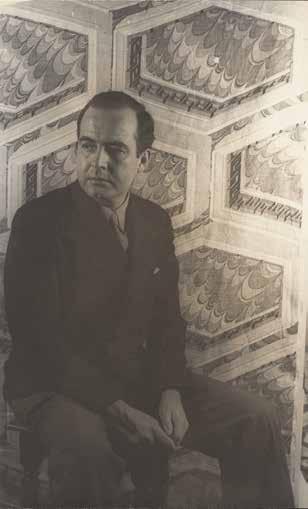
Briselli’s dissatisfaction with the work, especially with its difficulty. However, the violinist’s survivors drafted a news release in 2004 denying these accounts and clarifying that Briselli’s frustration with the concerto rested in the seemingly mismatched finale, which is in a different style than the rest of the work. Regardless of the reason, Briselli did not play the work at its premiere – an honor that fell instead to Albert Spalding.
With the impending war in Europe, Barber’s Violin Concerto is best understood when viewed against this backdrop. Opening with the solo violin, the almost pastoral quality of the first movement (Allegro) imparts a sentimental and haunting feeling to the work. Could this represent Europe before the war? A second theme, with a more jagged rhythm, is introduced by the clarinets. Occasional dark clouds cast fleeting shadows over the rhapsodic reverie. With a poignant oboe solo of surpassing beauty, the second movement (Andante) begins with a sense of mystery. However, the central
Lara St. John
After performing for decades around the globe as a “high-powered soloist” (The New York Times), Canadian-born violinist Lara St. John has chosen to dispense with a conventional biography, preferring instead to offer the following personal statement:
“I began playing the violin when I was two years old and have continued to do so ever since. But even though my career has had many high points and offered real artistic satisfaction, I cannot honestly say I would do it all over again. It has required horrific sacrifices – including my experiences with child sexual abuse and being treated as little more than a commodity by a long list of presenters, administrators, and so-called educators.
“Rampant misogyny continues to be depressingly commonplace in the world of classical music, incredibly, even as we fumble our way toward the middle of the 21st century. This has drained away a lot of the sheer joy of making music for me.
“At the same time, I have made some wonderful friends in this business. I will always have faith in them and in the profound power of music to inspire and to heal. I will never stop being amazed by the possibility within a simple instrument like the violin. But my desire to use it as a tool for making a living has fallen off to almost nothing.”
Lara has performed as a soloist with most of the world’s major orchestras. She also owns the recording label Ancalagon, which she founded in 1999. In 2022, she released she/her/hers, her label’s 16th album, featuring solo violin works by
section introduces distant martial fanfares, hinting at the unrest to follow in the finale. Marked Presto in moto perpetuo, the movement’s endless runs, set against a boisterous accompaniment, bring to mind the “machine of war” from Shostakovich’s

women. After going public with her own experience of being raped by her professor at the Curtis Institute of Music when she was 14 years old, Lara heard from many other survivors who were abused by music teachers, conductors and colleagues, with the complicity of their respective institutions. She is now in the process of making Dear Lara, a documentary film on this subject.
In 2021, Lara was invested with the Order of Canada, her country’s highest honor. She is a knight of Burgundy and a reptile enthusiast. She owns and performs on a 1779 Guadagnini, a 2011 David Wiebe, and a 2024 Isabelle Wilbaux.
Eighth Symphony. With its brutal accentuations and wickedly delightful violin figurations, the concerto ends in a blazing display of technical ability.
© 2025 Orpheus Music Prose & Craig Doolin, www.orpheusnotes.com
STILL WE SING
Saturday, January 17, 2026 | 7 p.m.
Tri-Cities
Sunday, January 18, 2026 | 3 p.m.
Walla Walla University Church
Made possible by the WW Symphony Guest Composer/Artist Fund - Underrepresented Voices
André Thomas, guest conductor
Mid-Columbia Mastersingers
Reginald Unterseher, associate conductor
Justin Raffa, artistic director
Wolfgang Amadeus Mozart Requiem in D minor, K. 626 (1791)
NaGuanda Nobles, soprano
Nicole Sonbert, mezzo-soprano
Roderick George, tenor
Robb Harrison, baritone
André Thomas
NaGuanda Nobles, soprano
Roderick George, tenor
I. Introitus
a. Requiem aeternam
II. Kyrie
III. Sequentia
a. Dies irae
b. Tuba mirum
c. Rex tremendae
d. Recordare
e. Confutatis
f. Lacrymosa
IV. Offertorium
a. Domine Jesu
b. Hostias
V. Sanctus
VI. Benedictus
VII. Agnus Dei
VIII. Communio
a. Lux aeterna
b. Cum sanctis tuis
Mass: A Celebration of Love and Joy
I. Kyrie
II. Gloria
III. Credo
IV. Sanctus
V. Agnus Dei
WOLFGANG AMADEUS MOZART
Born January 27, 1756, in Salzburg, Austria
Died December 5, 1791, in Vienna, Austria
Requiem in D minor, K. 626 (1791)
Last WWS Performance: May 16, 2006
Approximate length: 50 minutes
The work was left unfinished at Mozart’s death. It is scored for SATB choir, SATB soloists, two clarinets, two bassoons, two trumpets, three trombones, timpani, organ, and strings.
In Mozart’s day, musical plagiarism was considered acceptable; imitation was the sincerest form of flattery. It was also common, if not viewed as completely honest, to accept credit for a work you commissioned. Therefore, when the wife of Count Franz von Walsegg-Stuppach died in February of 1791, he planned a memorial service using the music of another
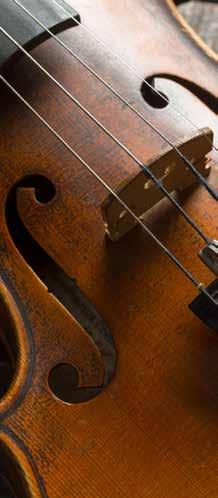
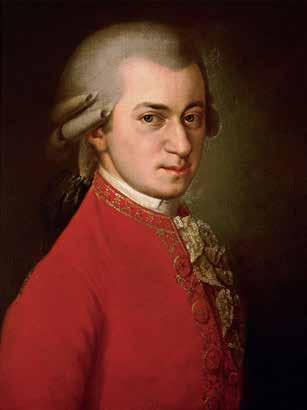
Philanthropy in Harmony with Our Community
Like music, philanthropy begins with a single note, a single act of generosity that, when joined with others, creates something greater.
For more than 40 years, Blue Mountain Community Foundation has partnered with donors to compose legacies that enrich Walla Walla, Umatilla, Columbia, and Garfield counties. Today, with more than $115 million in charitable assets, BMCF builds a crescendo of impact through millions in scholarships and grants each year. Some of these funds are permanently dedicated to supporting the Walla Walla Symphony, helping ensure its excellence for decades to come.
Your gift—today or through your estate—can join this symphony of generosity and keep the music alive for generations. To learn more, contact Sara Archer at sara@bluemountainfoundation.org or 509-529-4371.

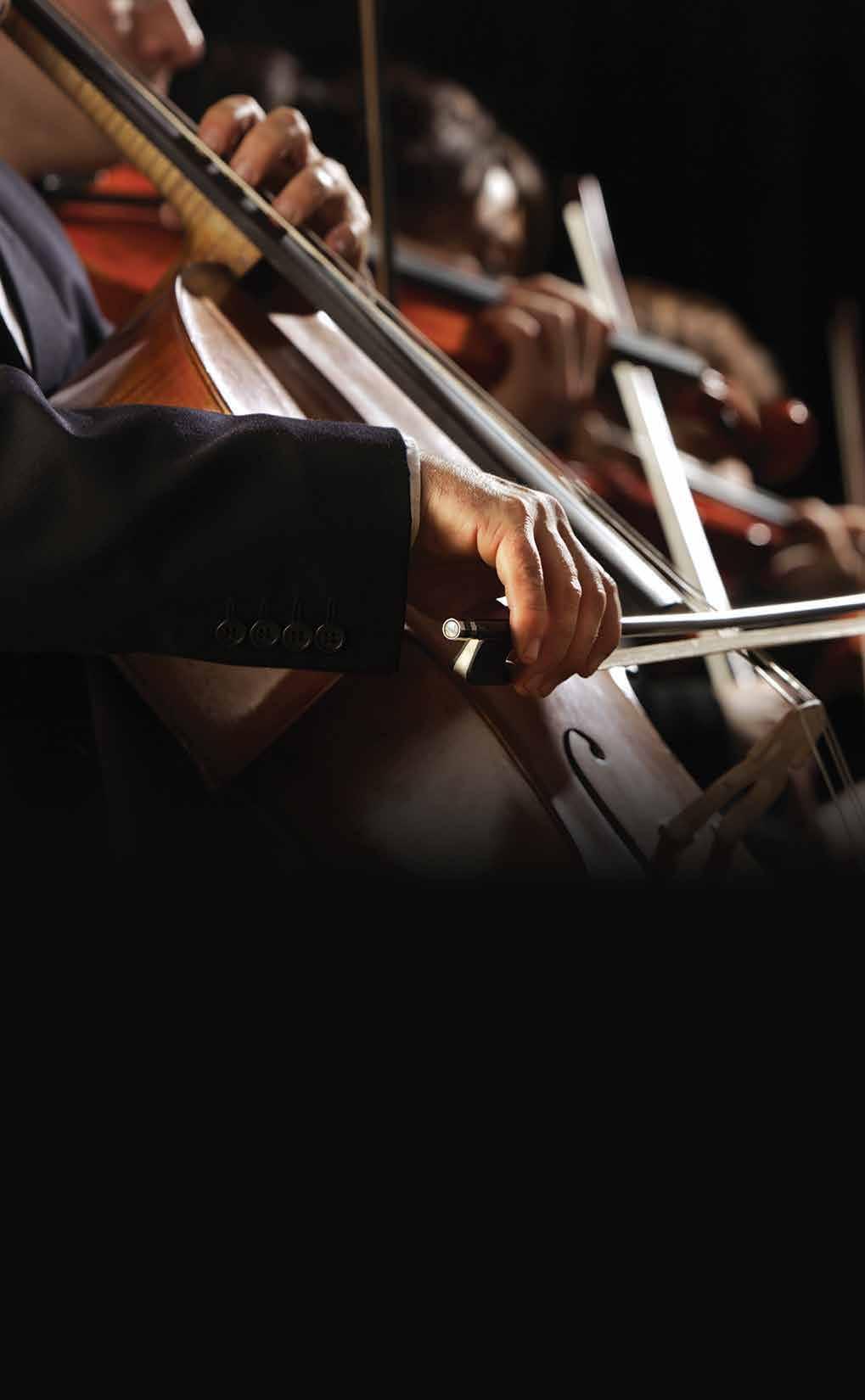
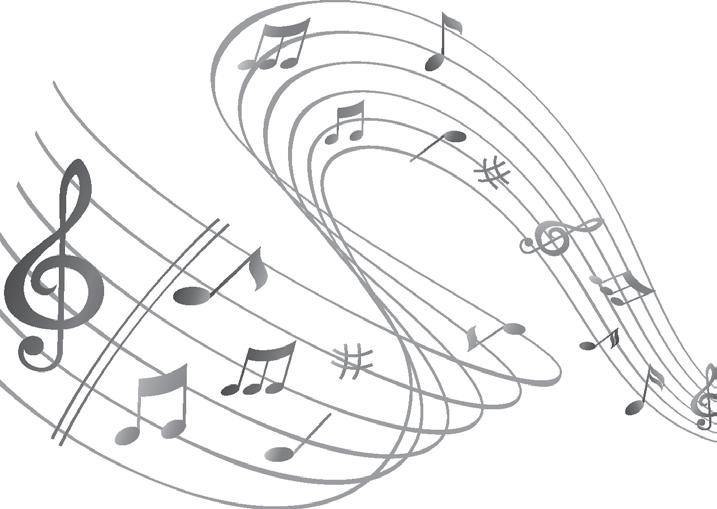

composer. In July, he sent his steward, Franz Anton Leitgeb, to visit Mozart. Dressed in a dark cloak and wearing a dark mask, the messenger presented the composer with a letter commissioning a Requiem Mass at a price to be named by Mozart. Any attempt to discover the identity of his patron would result in cancellation of the order.

The work was put into Mozart’s queue of pieces to be completed, but writing a clarinet concerto, two operas, and a Masonic cantata pushed composition of the Requiem to the end of October. Mozart worked on the piece for just twenty days before falling ill on November 20, only to die two weeks later. It is worth noting that Antonio Salieri, a composer more respected than Mozart in the late eighteenth century, had no role in the composition of the Requiem or in Mozart’s untimely demise. Despite centuries of creative storytelling that have delighted audiences and angered historians, it remains no secret that Mozart died of either rheumatic fever or uremia (kidney failure, a buildup of urea in the bloodstream). Despite what the speculative and entertaining play and movie Amadeus would have us believe, Salieri had no role in Mozart’s death.
Mozart’s Requiem should never have been performed. He completed only one section of the eight. Although fragments in varying degrees of completion were left for the remainder of the work, most of the Requiem required the intervention of another composer if it was ever to reach a performable state. Mozart’s widow,

Constanze, needed the money promised by Count Walsegg-Stuppach, so she led the patron to believe that her husband had finished the work before his death. She called upon Mozart’s pupil Joseph Eybler to make the necessary additions. Eybler, feeling overwhelmed by the monumental task, quit soon afterward, passing the job to fellow pupil Franz Xaver Süssmayr. Composers Maximilian Stadler and Franz Freystadtler also made minor contributions to the effort. The Sanctus, Benedictus, and Agnus Dei were completely the work of Süssmayr.
The difficulty of reconstructing exactly which composers had completed which sections of the work would require much more space than the present setting allows. Musicologist H. C. Robbins Landon, in his exhaustive Mozart’s Last Year, returned to original manuscripts and analyzed the types of paper used for individual parts of the Requiem. He established, as suspected, that Süssmayr completed the bulk of the work, while Eybler filled in some of the orchestration.
Count Walsegg-Stuppach held the memorial service for his wife on December 14, 1793, at the Cistercian monastery of Neukloster in Wiener Neustadt. The Count conducted the Requiem as his own work. Modern scholarship shows that Mozart was probably aware of Walsegg-Stuppach’s identity through his connections with musicians at Neukloster.
© 2025 Orpheus Music Prose & Craig Doolin, www.orpheusnotes.com

André J. Thomas GUEST CONDUCTOR
André J. Thomas is a Professor Emeritus of Music at Florida State University. He was visiting Professor of Choral Conducting at Yale University from 20202022. He also served as a faculty member at the University of Texas, Austin. He is presently an Associate Artist with the London Symphony Orchestra.
Dr. Thomas received his degrees from Friends University (B.A.), Northwestern University (M. M.), and The University of Illinois (D.M.A.). He is in demand as a choral adjudicator, clinician, and director of Honor/All-State Choirs throughout North America, Europe, Asia, New Zealand, Australia, and Africa. Dr. Thomas has conducted choirs at the state, division, and national conventions of the Music Educators National Conference (NAfME) and the American Choral Directors Association (ACDA). His international conducting credits are extensive.
He has led numerous prestigious orchestras and choirs around the world, including the Birmingham Symphony Orchestra in England, the Berlin Radio Choir and the North German Radio Choir in Germany, the Netherlands Radio Choir, the Bulgarian Radio Choir and Orchestra, the Seoul Metropolitan Chorus, the Ansan City Choir, and the Jeju Provincial Seogwipo Chorale in South Korea. He has



also conducted the Charlotte Symphony, China’s People’s Liberation Orchestra, the Czech National Symphony Orchestra, and the London Symphony Orchestra.
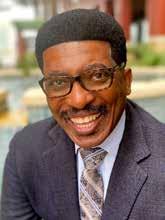
Thomas is a distinguished composer and arranger with Hinshaw Music, Inc., Mark Foster Music Company, H.T. FitzSimons Publishing Company, Lawson-Gould Music, Earthsongs Choral Music, Choristers Guild, and Heritage Music Press.
Various musical organizations have recognized Thomas with the Living Legend Award, the Distinguished Service Award, the Robert Shaw Award, the NCCO (National Collegiate Choral Organization) Lifetime Achievement Award, and the Southern Region of ACDA Award of Excellence. In January 2019, he was inducted into the Florida Music Educators Hall of Fame, and in 2022, he was presented the Samuel Simons Sanford Medal, the most prestigious honor conferred by the Yale School of Music.
FLOORING & DESIGN


Reginald Unterseher
MID-COLUMBIA MASTERSINGERS ASSOCIATE CONDUCTOR
Reginald Unterseher, Mid-Columbia Mastersingers Associate Conductor, is Music Director and Composer-inResidence at Shalom United Church of Christ, Richland, Washington. His works are published by Oxford University Press, Walton Music, MusicSpoke.com, and his website, reginaldunterseher.com, as well as in the Justice Choir Songbook. He was born in Walla Walla and lived in MiltonFreewater until 1980.
Mr. Unterseher’s compositions are regularly performed throughout the world and have been featured at regional and national American Choral Directors Association (ACDA) and National Association for Music Education (MENC) conventions in the U.S., as well as at Carnegie Hall in New York City. He was the 2013 Washington State Music Teacher’s Association’s “Composer of the Year.”
Requiem (Choir)
Requiem aeternam dona eis, Domine, et lux perpetua luceat eis.
(Soprano)
Te decet hymnus, Deus, in Sion, et tibi reddetur votum in Jerusalem.
(Choir)
Exaudi orationem meam, ad te omnis caro veniet.
Requiem aeternam dona eis, Domine, et lux perpetua luceat eis.
Kyrie
Kyrie eleison. Christe eleison. Kyrie eleison.
Dies Irae
Dies irae, dies illa Solvet saeclum in favilla, Teste David cum Sibylla. Quantus tremor est futurus
Quando judex est venturus Cuncta stricte discussurus.
Reginald Unterseher has always been drawn to composing pieces about the natural world and current events. His career path has careened between being a ski instructor, an opera and music theater performer, an at-home dad to three children, a conductor, and voice teacher. He has served Washington ACDA and Northwest ACDA in several Repertoire & Resources roles over the last 20 years and was given the Leadership and Service Award by Washington ACDA in 2025. He is a founding member of Northwest Choral Publishing.
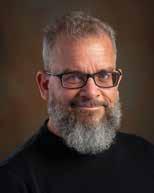
Reg has had more of his compositions performed in a nuclear reactor than any other composer in history, living or dead.
(Choir)
Grant them eternal rest, O Lord, And may perpetual light shine on them.
(Soprano)
Thou, O God, are praised in Sion, And unto Thee shall the vow be performed in Jerusalem.
(Choir)
Hear my prayer, Unto Thee shall all flesh come. Grant them eternal rest, O Lord, And may perpetual light shine on them.
Lord have mercy upon us. Christ have mercy upon us. Lord have mercy upon us.
Day of wrath, that day Will dissolve the age in ashes As David and the Sibyl bear witness. What dread there will be When the Judge shall come To judge all things strictly.
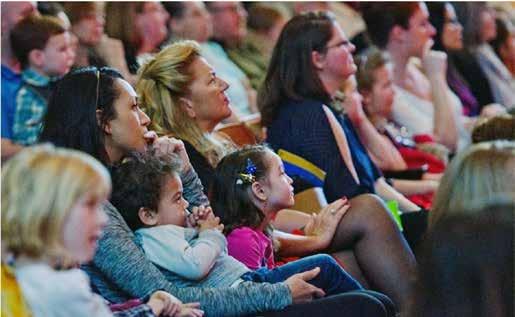
Did you know?
The Walla Walla Symphony proudly welcomes youth to all our concerts and events by providing free and low-cost tickets. This initiative is made possible through the generosity of local businesses in our community, including


Thank you for your support! If you are interested in supporting this initiative, please contact Patron Relations Manager Rachel Condie at rachel@wwsymphony.org.
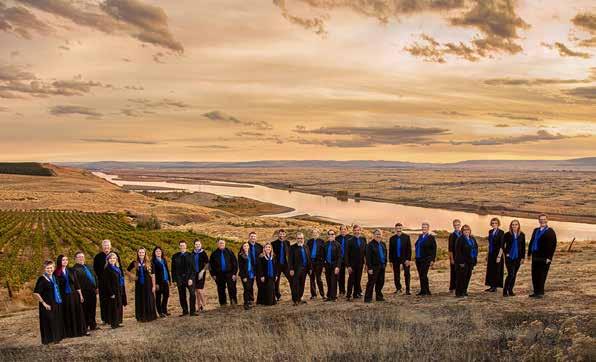
Mid-Columbia Mastersingers
For nearly 40 years, the Mid-Columbia Mastersingers have brought choral music to the Tri-Cities and surrounding areas, having evolved into a cornerstone of the local performing arts community. In addition to concerts, outreach activities include singer workshops, special school programs, and free K-12 tickets to all concerts.
The Mid-Columbia Mastersingers was founded as “Consort Columbia” in 1986 by Estyn Goss, as an elite choir of auditioned singers. Since its beginning, the group has been a versatile one, having embodied at times a musical theatre group, symphonic chorus, operatic chorus and also serving as the umbrella organization for a children’s choir.
Goss led the group for 10 years, and following artistic directors included Reginald Unterseher (1996-2004) and Robert Bode (2005-2008), with Justin Raffa taking the position in 2008. Since his arrival, the choir has continued to grow in musical excellence.
The Mid-Columbia Mastersingers
organization currently comprises a chamber choir, symphonic choir, adult treble choir, a youth choir program for 4th-6th grade students, the Columbia Chorale, and the Atomic Chapter of Beer Choir.

There is no audition to join our adult ensembles of 300+ singers.
Since 2015, the Mastersingers have become more nationally recognized for producing annual concert events in the B Reactor National Historic Landmark. These programs and more help us to fulfill our mission of transforming lives through the power of choral music.
Organizational focus has included musical excellence and diversity, outreach to underserved populations, and collaboration with other arts organizations.
More information is available at mcmastersingers.org.
NaGuanda Nobles SOPRANO
NaGuanda Nobles discovered a love for singing at an early age. Mrs. Nobles accepted a full scholarship to attend Florida State University (FSU) and received her BM and MM degrees in Voice Performance. Receiving rave reviews for her “big, warming soprano with a lovely shimmering top that she uses with a ravishing effect”, Mrs. Nobles offers a winning combination of beauty and intensity in her singing. She has made her mark on concert and operatic stages all across the world. Mrs. Nobles released her debut CD of spirituals, entitled “Homage to the Journey”, as a tribute to the slaves whose battered
Tuba Mirum (Bass)
Tuba mirum spargens sonum Per sepulcra regionum
Coget omnes ante thronum.
(Tenor)
Mors stupebit et natura
Cum resurget creatura
Judicanti responsura. Liber scriptus proferetur
In quo totum continetur, Unde mundus judicetur.
(Contralto)
Judex ergo cum sedebit
Quidquid latet apparebit, Nil inultum remanebit.
(Soprano)
Quid sum miser tunc dicturus, Quem patronum rogaturus, Cum vix justus sit securus?
(All Soloists)
Cum vix justus sit securus?
shoulders upon which she stands and the people who have been instrumental throughout her career. Mrs. Nobles is also the founder of The HighArt Foundation, a non-profit organization that awards scholarships and provides mentorship to graduating high school seniors who are planning to pursue a degree in music.

Visit www.naguandanobles.com for more information.
Rex Tremendae
Rex tremendae majestatis, Qui salvandos salvas gratis, Salva me, fons pietatis.
(Bass)
A trumpet, spreading a wondrous sound Through the graves of all lands, Will drive mankind before the throne.
(Tenor)
Death and nature shall be astonished When all creation rises again To answer to the Judge. A book will be brought forth In which everything is written, According to which the world will be judged.
(Contralto)
When therefore the Judge takes His seat Whatever is hidden will reveal itself. Nothing will remain unavenged.
(Soprano)
What then shall I say, wretch that I am?, What advocate entreat to speak for me, When even the righteous may hardly be secure?
(All Soloists)
When even the righteous may hardly be secure?
King of great majesty, Who freely savest the redeemed, Save me, O fount of mercy.
Nicole Sonbert MEZZO-SOPRANO
Nicole Sonbert has distinguished herself as a dynamic mezzo-soprano, captivating audiences with her rich tone and compelling stage presence. Her operatic repertoire includes Madame Flora in Menotti’s The Medium, Aunt Lou in Still’s Highway One, USA, Suzuki in Puccini’s Madama Butterfly, the Mother in Menotti’s The Consul, and Buttercup in Gilbert & Sullivan’s H.M.S. Pinafore
As a concert artist, she has appeared as alto soloist in Handel’s Messiah, Mozart’s Requiem in D minor, and Beethoven’s Symphony No. 9 in D minor.
In addition to her performing career,
Recordare
(Soloists)
Recordare, Jesu pie, Quod sum causa tuae viae, Ne me perdas illa die. Quaerens me sedisti lassus, Redemisti crucem passus, Tantus labor non sit cassus.
Juste judex ultionis
Donum fac remissionis
Ante diem rationis. Ingemisco tanquam reus, Culpa rubet vultus meus, Supplicanti parce, Deus. Qui Mariam absolvisti Et latronem exaudisti, Mihi quoque spem dedisti. Preces meae non sunt dignae, Sed tu bonus fac benigne, Ne perenni cremer igne. Inter oves locum praesta, Et ab haedis me sequestra, Statuens in parte dextra.
Confutatis
Confutatis maledictis
Flammis acribus addictis, Voca me cum benedictis. Oro supplex et acclinis, Cor contritum quasi cinis, Gere curam mei finis.
Nicole is a passionate advocate for the arts and a sought-after collaborator. She has worked with symphonies, festivals, and educational institutions to create projects that connect music to broader cultural conversations. She currently serves as Director of Voice at Eastern Washington University and as Assistant Editor for Youth Vocal Repertoire with the African Diaspora Music Project.
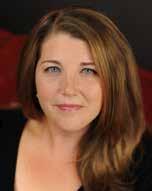
(Soloists)
Remember, blessed Jesus, That I am the cause of Thy pilgrimage, Do not forsake me on that day.
Seeking me Thou didst sit down weary, Thou didst redeem me, suffering death on the cross.
Let not such toil be in vain.
Just and avenging Judge, Grant remission
Before the day of reckoning. I groan like a guilty man. Guilt reddens my face. Spare a suppliant, O God. Thou who didst absolve Mary And didst hearken to the thief, To me also hast Thou given hope. My prayers are not worthy, But Thou in Thy merciful goodness grant That I burn not in everlasting fire. Place me among Thy sheep And separate me from the goats, Setting me on Thy right hand.
When the accursed have been confounded And given over to the bitter flames, Call me with the blessed.
I pray in supplication on my knees. My heart contrite as the ashes, Safeguard my fate.
Lacrimosa
Lacrimosa dies illa Qua resurget ex favilla Judicandus homo reus. Huic ergo parce, Deus, Pie Jesu Domine, Dona eis requiem. Amen.
Domine Jesu
Domine, Jesu Christe, Rex gloriae, libera animas omnium fidelium defunctorum de poenis inferni, et de profundo lacu: libera eas de ore leonis, ne absorbeat eas tartarus, ne cadant in obscurum,
(Soloists)
Sed signifer sanctus Michael repraesentet eas in lucem sanctam,
(Choir)
Quam olim Abrahae promisisti et semini eius.
Mournful that day
When from the dust shall rise Guilty man to be judged. Therefore, spare him, O God. Merciful Jesus Lord Grant them rest. Amen.
Lord Jesus Christ, King of glory, Deliver the souls of all the faithful departed From the pains of hell and from the bottomless lake.
Deliver them from the lion's mouth. Neither let be swallowed by the abyss, Nor fall into the darkness,
(Soloists)
And let St. Michael, Thy standard-bearer, Lead them into the holy light,
(Choir)
Which once Thou didst promise to Abraham and his seed.

THE CIRCLE C QUARRY IS A PROUD SUPPORTER
Roderick George TENOR
Renowned for his commanding stage presence, exceptional vocal prowess, and unwavering commitment to musical excellence, tenor Roderick George has captivated audiences across the globe. His concert repertoire spans from the classic masterpieces of Bach and Mozart to the contemporary compositions of composers like Adolphus Hailstork and Mark Hayes, including recent performances of Hailstork’s I Will Lift Up Mine Eyes with the Nashville Symphony and in Minneapolis with VocalEssence, and Hayes’s Kindness with the Huntsville Master Chorale. He has sung more than 80 performances of Handel's Messiah, including his Lincoln Center debut, and recent appearances with the Alabama Symphony Orchestra, North Carolina Baroque Orchestra, and El Paso Choral Society. Recent engagements have included Mozart’s Requiem with the Northwest Florida Symphony, Orff’s Carmina Burana with the Northeastern Pennsylvania Philharmonic, Beethoven’s Ninth Symphony with the Alabama Symphony Orchestra, Lili Boulanger’s Faust et Hélène with the New York Repertory Orchestra, Dvořák’s Stabat Mater with the Highland Park Chorale, and Nathaniel Dett’s The Chariot Jubilee with the Savannah Philharmonic. Roderick has concertized internationally,
Hostias
Hostias et preces, tibi, Domine, laudis offerimus: tu suscipe pro animabus illis, quarum hodie memoriam facimus: fac eas, Domine, de morte transire ad vitam, quam olim Abrahae promisisti et semini eius.
Sanctus
Sanctus, Sanctus, Sanctus, Dominus Deus Sabaoth! Pleni sunt coeli et terra gloria tua. Osanna in excelsis.
with notable highlights including appearances throughout Russia with the Orpheus Radio Symphony Orchestra and the Krasnoyarsk Philharmonic.
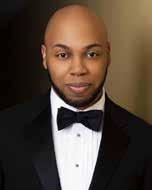
As a music ambassador, he was privileged to perform at the U.S. Embassy in Moscow. Hailed for his “lyrical and profoundly expressive” voice (TriangleSings North Carolina), Roderick has performed diverse leading tenor opera roles, such as Nemorino in L'elisir d'amore, Rodolfo in La Bohème, Alfredo in La Traviata, Pinkerton in Madama Butterfly, Tamino in Die Zauberflöte, Don Ottavio in Don Giovanni, Sportin’ Life in Porgy and Bess, Roméo in Roméo et Juliette, Gérald in Lakmé, and Camille de Rosillon in The Merry Widow
A multifaceted artist, his professional ensemble affiliations have included recordings and multiple tours across North America and Europe with the American Spiritual Ensemble and more recently as a featured artist with the Jason Max Ferdinand Singers, including the ensemble’s London debut at Royal Albert Hall.
We offer unto Thee this sacrifice of prayer and praise. Receive it for those souls Whom today we commemorate. Allow them, O Lord, to cross from death into the life
Which once Thou didst promise to Abraham and his seed.
Holy, holy, holy, Lord God Almighty! Heaven and earth are full of Thy glory. Hosanna in the highest.
Robb Harrison BASS-BARITONE
Robb Harrison is the Artistic Director and Conductor of the Walla Walla Choral Society in Walla Walla, Washington. In addition, he teaches choir and music at College Place High School in College Place, Washington.
Prior to his educational and conducting career, Robb spent several years as a professional operatic bass-baritone and musical theatre performer. He began as a young artist with Opera New Jersey and went on to debut as Lysander in Michael Ching’s new production of A Midsummer Night’s Dream at Opera America, eventually performing across the country.
In recent years, Robb lived in Salem,
Benedictus (Soloists)
Benedictus qui venit in nomine Domini
(Choir)
Osanna in excelsis.
Agnus Dei
Agnus Dei, qui tollis peccata mundi, dona eis requiem.
Agnus Dei, qui tollis peccata mundi, dona eis requiem.
Agnus Dei, qui tollis peccata mundi, dona eis requiem sempiternam.
Lux Aeterna
(Contralto, then the Choir)
Lux aeterna luceat eis, Domine, cum sanctis tuis in aeternum, quia pius es.
(Choir)
Requiem aeternam dona eis, Domine, et lux perpetua luceat eis, cum sanctis tuis in aeternum, quia pius es.
Oregon, where he taught middle and high school choir and served as conductor, music director, and vocal director for musical theatre productions at the Historic Elsinore Theatre. His credits there include Bye Bye Birdie, Annie Get Your Gun, and A Christmas Story.

Robb holds a Bachelor of Music in Music Education and a Master of Education from Willamette University, as well as a Master of Music in Vocal Performance from the University of Arizona.
(Soloists)
Blessed is He who comes in the name of the Lord.
(Choir) Hosanna in the highest.
Lamb of God, who takest away the sins of the world, Grant them rest.
Lamb of God, who takest away the sins of the world, Grant them rest.
Lamb of God, who takest away the sins of the world, Grant them everlasting rest.
(Soprano, then the Choir)
May the eternal light shine on them, O Lord.
With Thy saints forever, Because Thou art merciful.
(Choir)
Grant them eternal rest, O Lord, And may the perpetual light shine on them,
With Thy saints forever, Because Thou art merciful.
ANDRÉ J. THOMAS
Born August 15, 1952, in Wichita, Kansas
Mass: A Celebration of Love and Joy (2019)
Last WWS Performance: First performance at tonight’s concert
Approximate length: 22 minutes
This work was premiered in 2019 in Tallahassee, Florida, by the Tallahassee Community Chorus conducted by the composer. It is scored for SATB chorus, vocal soloists, two flutes, oboe, English horn, two clarinets, two bassoons, four horns, three trumpets, three trombones, tuba, timpani, percussion, piano, and strings.
Dr. André J. Thomas is an Associate Artist with the London Symphony Orchestra and Emeritus Professor of Music at Florida State
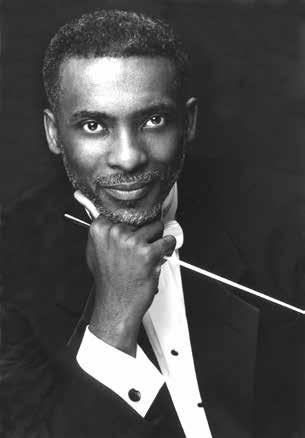
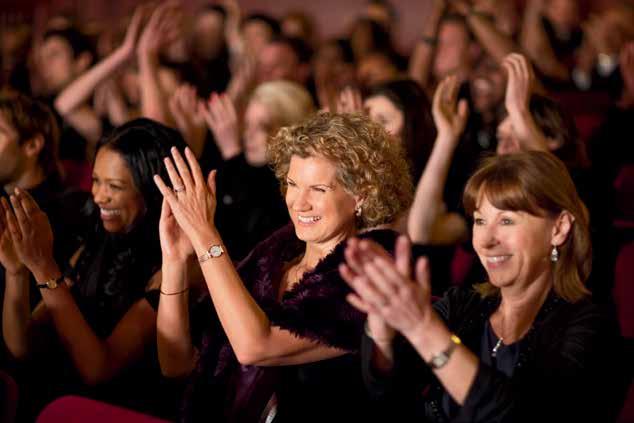






Choral Conducting at Yale University (20202022) and has been a faculty member at the University of Texas at Austin.
A renowned guest conductor, Dr. Thomas has led prestigious orchestras and choirs worldwide. He is also a distinguished composer and arranger, with works published by prominent music publishers such as Gentry, Hinshaw, Lawson Gould, Boosey & Hawkes, Heritage Music Press, and others.
His book, Way Over in Beulah Lan'... Understanding and Performing the Negro Spiritual is a significant contribution to the field. Dr. Thomas has received numerous honors, including the Robert Shaw Award from ACDA (2017) and the Samuel Simons Sanford Medal from Yale University. He is a
Past National President of ACDA.
Thomas’ Mass: A Celebration of Love and Joy dates from 2018 and was composed to commemorate the conclusion of his 31 years as Artistic Director of the Tallahassee Community Chorus. It uses the text from the Ordinary of the Mass, which has been mostly standard for 1,000 years. Thomas uses an English translation with occasional Biblical interpolations. His setting is in a traditional Gospel style with soloists and chorus.
Throughout the work, Thomas has expertly set his text with moments of mindfulness balanced with glorious climaxes. This is music to be felt deeply and enjoyed in the moment.
Biography provided by the composer
I. Kyrie
(Choir)
Kyrie eleison.
Lord, have mercy on us. Oh, Lord, have mercy.
(Tenor)
Sinner, please don’t let this harvest pass.
(Choir)
Sinner, please don’t let it pass. Let it pass.
Kyrie eleison.
Where you gonna be when the trumpet sounds?
Lord, have mercy on us.
Oh, Lord, have mercy. Oh, Lord.
(Tenor)
Christ, have mercy. In a world of disarray, in a world wracked with pain, we need your help, O Christ! Lord, King of heaven.
(Choir)
Christe, eleison! Christ have mercy on us. Lord, have mercy on us.
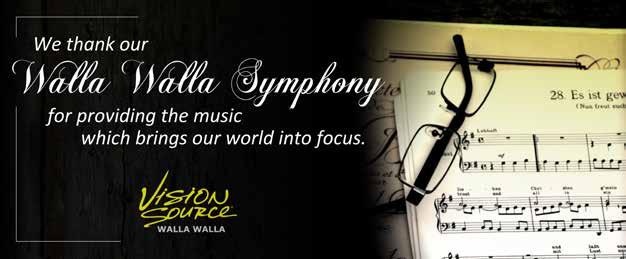
II. Gloria
(Choir)
Glory, glory to God in the highest, and on earth, peace to all men of goodwill. Glory to God in the highest. We praise Thee, we bless Thee, we adore Thee, we glorify Thee, we give thanks to Thee for Thy great glory.
Glory, glory to God in the highest, and on earth, peace to all men of goodwill
(Soprano)
Lord God, King of heav’n, Father, Almighty One.
Glory be to Jesus Christ, Lamb of God, the Father’s only Son, Oh Thou who takes away all the sins of the world,
III. Credo
(Tenor)
I believe in God, the Father almighty. I believe in God, the maker of heaven and earth,
(Choir) and in Jesus Christ, his only Son, our Lord, who was conceived by the Holy Ghost, born of the Virgin Mary, suffered under Pilate, crucified, died, and was buried. He descended into hell!
(Tenor)
On the third day, He rose. He ascended to heaven.
(Choir)
From death he was set free.
(Tenor)
Now he sits at the right hand, (Choir) and he’s waiting for you and me.
have mercy on us.
(Choir)
Receive our prayers.
(Soprano)
Thou who sits at the right hand of God the Father Almighty in heaven, have mercy on us!
(Choir)
For only Thou art holy, only Thou art the Lord.
Only Thou art holy, only Thou art most high. In the name of the Father, in the name of the Son, in the name of the Holy Ghost, in the glory of the Father, Amen!
He will judge all the world. He will judge you and me.
I believe in the Holy Spirit. I believe in God, and the Holy Catholic Church.
I believe in one baptism for the remission of sin and rebirth.
I believe in the Resurrection, and the Communion of Saints in this world. I believe when my life is over, I’m going home just to live with my God.
I believe in the Father. I believe in the Son. I believe in the Holy Ghost.
I await the Resurrection of the dead, and the life of the world to come.
I believe in God, maker of heaven and earth. I believe in God, the Father almighty!

IV. Sanctus
(Choir)
Above him stood the seraphim.
(Tenor)
And one cried to another:
(Choir)
“Holy, holy, holy, the Lord God Almighty, who was and is to come.
Holy, holy, holy is the Lord of hosts; heaven and earth are full of thy glory.”
(Soprano)
In the year that King Uzziah died I also saw the Lord.
He was sitting on his throne, high and lifted up, and his train filled the temple.
Above it stood the seraphim. Each one had six wings; with two he covered his face, and with two he covered his feet, and with two he did fly. And one cried to another:
(Choir)
“Holy, holy, holy, the Lord God Almighty, who was and is to come.
Holy, holy, holy is the Lord of hosts; heaven and earth are full of thy glory.
“Hosanna in the highest.
Hosanna to the Son of David.
Blessed is he, who comes in the name of the Lord.
Lord God of hosts.”
(Soprano)
Like the seraphim I want two wings to cover my face.
Oh Lord, I want two wings to fly away,
(Choir)
so the world can’t do me no harm.
We’re crying
“Holy, holy, holy is the Lord of hosts; heaven and earth are full of thy glory!”

V. Agnus Dei
(Choir)
Lamb of God, who takes away the sins of the world, have mercy on us.
(Tenor)
You died on Calvary, just to set the captives free. You died on Calvary to save a sinner like me!
(Choir)
Lamb of God, who takes away the sins of the world, grant us Thy peace. Lamb of God, who takes away the sins
of the world, have mercy on us. Grant us Thy peace! The Lamb is worthy. Worthy is the Lamb that was slain. The Lamb is worthy, redeemed by his precious blood. God’s given us power and riches and wisdom and strength, power and riches and glory and blessing. Worthy is the Lamb that was slain. The Lamb is worthy, redeemed by his precious blood.
Amen!









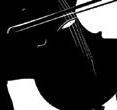

Music is Power


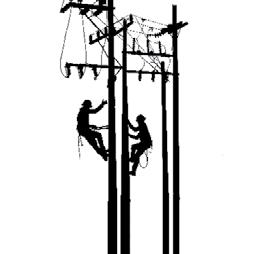
2025-2026 Season
Contributions to the Symphony’s Annual and Endowment Funds
The Walla Walla Symphony acknowledges and thanks all who have contributed to the Symphony’s Annual and Endowment Funds. Acknowledgements below reflect gifts supporting the 2025-26 Season received through September 15, 2025. If your name did not appear as it should, please accept our sincere apologies and call the Symphony office at 509-529-8020.
Platinum Circle
$20,000+
Cape Flattery Foundation
Silver Circle
$5,000-9,999
Sherwood Trust
Richard and Deberah Simon
Benefactor
$1,000-2,499
Darcie Furlan
Mike and Sue Gillespie
Margo and Tom Scribner
Sandra Lynn Travis
George T. Welch
Testamentary Trust
Patron
$500-999
Anonymous
Jonathan and Wendy Braid
Jack Iverson and Sarah Hurlburt
Julie and Dwelley Jones
Richard Middleton-Kaplan
MidSummer Musical Retreat
Hollibert and Carmella Phillips
Jan Rolfe
Friend
$200-499
Anonymous
Earl and Sandi Blackaby
Marilyn Burns
Charles and Jan Crouter
Bob and Maryjo Fontenot
Michael Kelcy
William Manierre
Michael and Erienne
Matthewson
Joyce E. Muzzall
Brad and Abby Sorensen
Julie and Dick Swenson
Roger and Terri Trick
Donor
$75-199
Delwyn Baker
Robert and Mary Betz
Darold and Barbara Bigger
Fr. Michael Brzezowski
Liz Conover
John and Pam Cress
Nina Dillon
Nona Gibbard
Yvonne Jackson
Todd and Teri Lesmeister
Terence Rogers
Kathleen Ruggeri
Chuck and Pat Templeton
Contributor
Up to $74
Chelanne Brown
David Elmendorf
Alan and Amy Faden
Rick and Mary Schaeffer Neel and Family
Don and Val Weaver
Memorial Gifts
In Memory of:
Peter Burns
Marilyn Burns
Alex DeMambro
Julie and Dick Swenson
Don and Val Weaver
Jack H. Jackson
Yvonne Jackson
Joanne and Robert Schaeffer
Rick and Mary Schaeffer Neel and Family
Dale Smelcer
Jan Rolfe
Margo and Tom Scribner
Heritage Society
The Heritage Society is a special group that honors and recognizes donors who have included the Walla Walla Symphony in their legacy plans. There is no minimum amount to be a member, as all gifts are welcome and important to us. For more information, please contact us at 509-529-8020 or stephanie@wwsymphony.org.
Mike and Sue Gillespie
Marian Hoare
John Jamison and Katherine Wildermuth
John T. Saul
Tom and Margo Scribner
Richard D. and Deberah Simon
Donald and Valerie Weaver
Jill J. Zagelow
Housing Hosts
Housing hosts provide out-of-town Symphony musicians with a place to stay while they are in Walla Walla for rehearsals and performances. If you would like to support the Symphony by becoming a housing host, contact General Manager Leah Davis at gm@wwsymphony.org or call the office, 509-529-8020.
Liubov and John Brunton
John Jamison and Katherine Wildermuth
Robert and Linnea Keatts
Nancy Kress
Missy Newcom
Keith and Barbara Noel
Susan Pickett and Robert Johnson
Wine Sponsors

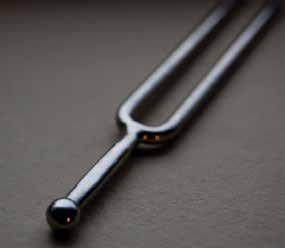

2024-2025 Season
Contributions to the Symphony’s Annual and Endowment Funds
The Walla Walla Symphony acknowledges and thanks all who have contributed to the Symphony’s Annual and Endowment Funds. Acknowledgements below reflect gifts supporting the 2024-25 Season received through June 30, 2025. If your name did not appear as it should, please accept our sincere apologies and call the Symphony office at 509-529-8020.
*Denotes contribution to the Endowment Fund ^Denotes gifts made in part or in whole through the Blue Mountain Community Foundation’s Valley Giving Guide.
Platinum Circle
$20,000+
Blue Mountain Community Foundation’s Valley Giving Guide
Cape Flattery Foundation
Susan Monahan and Mark Brucks
Monahan Brucks Foundation of the Blue Mountain Community Foundation
Silver Circle
$5,000-9,999
Sarah and John O’Connor
Sherwood Trust
Richard and Deberah Simon
Dick and Ruth Thomassen
David Meeker^
JL Stubblefield Trust^
Bronze Circle
$2,500-4,999
Anonymous (2)
Myles and Myrna Anderson
Skip and Ali Bell
Columbia REA
Creative West
Mike and Sue Gillespie
Key Technology
Albert Marshall^
The Sunny Day
Charitable Foundation
Underriner Honda of Walla Walla
United Way of the Blue Mountains
Washington State Arts Commission
George T. Welch
Testamentary Trust
Yancey P. Winans
Testamentary Trust
Benefactor
$1,000-2,499
Anonymous (2)
Tim and Kris Barry^
Jonathan and Wendy Braid
Greg and Linda Brown
Jan Kennedy Foster
Darcie Furlan
Ian Gallaher and Megan Babin
Dina Gilbert
Lynn Glesne
Bob and Linda Hanson
Hot Poop
John Jamison and Katherine Wildermuth^
Jamey Lamar
Tom and Sandi Madsen^
Jayne and Jim McCarthy
E. Hope Mena
Philip and Carol Morgan^
The National Orchestral Association
Kenneth and Laura Norris^
Chris Otis and Jon Ulsh
Michael and Lori Parnicky
Susan Pickett and Robert Arnold Johnson
Jan Rolfe
Doug and Malinda Saturno^
Margo and Tom Scribner
Harold and Helen Shepherd Foundation
Nancy Smithson
Karen Summers and Bill Hickey
Sandra Lynn Travis
Umpqua Bank
Walla Walla Music Organization
Carrie Welch Trust
Richard and Celia Weller
Cynthia Westerbeck and Roy Benton
Robert and Jill Zagelow^
Patron
$500-999
Anonymous (2)
Anitra Breit^
Greg & Linda Brown
Family Fund^
Lou Ann Casper
Michael and Gretchen de Grasse^
Bob and Maryjo Fontenot
Janeen Harbert
Hartl’s Bow Shop
Jack Iverson and Sarah Hurlburt
Julie and Dwelley Jones
Sharon and Timothy Kaufman-Osborn^
Michael Kelcy^
Ted and Kathi Lucia^
Richard Middleton-Kaplan
Pamela Mittelstadt and Karl Eckhardt^
Bob and Paula Negele
Hollibert and Carmella Phillips
Wendy and Dick Rahm
Stephen Rapp and Sharon Kamara^
Jane Roberts
David Simon*
Susan and Kirk Willard^
Jackie S. Wood^
Friend
$200-499
Anonymous (2)
Ann and Stephen Ames
Eric and Candace Ball
Earl and Sandi Blackaby
Barbara Bostwick
Marilyn Burns
Krista Burt^
Stuart and Sheryl Byerley
Wendy Cheng^
Ann and Dick Counsell^
Destination CrossFit
Charles and Jan Crouter
Joel and Hilary Dickerson^
Bill Eyestone^
Liz Fraser and Mark Haynes
Walter and Danielle Froese^
David Glenn and Laura Curtis
Hall Grimes and Yvonne Strader
Tricia Harding and Gary Meddaugh^
Scott and Teresa Harrington^
Segio and Wendy Hernandez^
Ann M. Johnson
Robert and Linnea Keatts^
Pedrito Maynard-Reid^
MidSummer Musician Retreat
Joyce E. Muzzall
Tammy Nelson
Kirsten Nicolaysen
Dr. and Mrs. Franklin Ordelheide
John F. Patterson^
Molly Reid and Greg Nelson^
Margaret Roser
St. Paul’s Episcopal Church
Marlene Davis Schuck
Kent and Eileen Settle
Manford and Betty Simcock
Roger and Terri Trick
Charles and Ellen Thiel^
Jesse Thompson^
Sharon L. Thompson
Donor
$75-199
Anonymous (2)
Kathryn Amende
Tom and Jane Baffney*
Chris Baird
Jack and Mary Barga
Robert and Mary Betz
Darold and Barbara Bigger
Ruth Buchtel
Becky Burad
Mary Kay Clausen
Liz Conover
Sandra Cannon^
Barbara Coddington and Clark Colohan
Ginny and Mark Dameron
Leah K. Davis
Gary and Carol Dodge^
Deborah Doyle and John Wakeman^
Gwyn Frasco^
Sonja and Earl Gooding
Mark and Margaret Graves
Karen and Kenneth Hart
Kjirsten Hedine
Deborah Holmes and Craig Gunsel
Yvonne Jackson
Christopher and Mardra Jay
Jack and Kathy Jensen
Ben and Jennifer Leach^
Rosemary Lloyd
Betty Maland/Dusty’s Ski Shop
Casey and Vicky McClellan
John and Jane McKern
McMenemy-Chabre Family^
Christine Meeker
Nancy Moore
Phil and Debbie Muthersbaugh
Dr. and Mrs. Franklin
Ordelheide
Tricia Rice
Terence Rogers
Mary Lynne and Dale Schroeder
Don and Anne-Marie Schwerin
Dale and La Dessa Smelcer^
Brad and Abby Sorensen
John and Jenny Stratton^
Karen Summers^
Karen Szall and Chris Nelson^
Chuck and Pat Templeton
Stephen and Suzanne Towery^
Don and Val Weaver
Stephen Wilen
Leah Wilson-Velasco and Michael Simon
Contributor
Up to $74
Anonymous (3)
Sabine Accuntius
Richard Alan
Douglas and Karen Bayne^
Monica Boyle
Richard Brooks
Chelanne Brown
Cathy Carkner
The Banderas Family^
Nicholas Edge^
David Elmendorf
Nina Dillon
Brian A. Dohe
Nancy Driver^
Alan and Amy Faden
Sheila Fergusson
Ben and Connie Gish
Christine and Nicholas Granath
Susan Hopkins^
Katherine Jackson
Patricia Johnston & Joe Humble^
Alison Kirby and Dan Calzaretta
Judith McClellan
Barry Murphy
Rick and Mary Schaeffer Neel and Family
Theresa and David Nichols
Priscilla Nicolaysen
Eugene Dakota Orlando
Austin Price
John Reid
Kimberly Rolfe
Audney Somerville^
Barbara Taylor^
Jonathan and Melissa Webster
Paula Williams
Instrument Lending
Library
Anonymous
Hartl’s Bow Shop
Leah and Tor Sandven
Car Donations
Joshua Farrell
Memorial Gifts
In Memory of:
Scott Bayne
Douglas and Karen Bayne
Chris Bonds
Sharon L. Thompson
Jeff Blum
Ginny and Mark Dameron
Elizabeth Brandt
Darold and Barbara Bigger
Peter Burns
Marilyn Burns
Harold E. Crawford
Tom and Jane Baffney
Alex DeMambro
Destination CrossFit
Brian A. Dohe
Sonja and Earl Gooding
Tricia Harding and Gary Meddaugh
Edward Foster
Jan Kennedy Foster
Doris Graves
Mark and Margaret Graves
Jack H. Jackson
Yvonne Jackson
Barbara Kaplan
Richard Middleton-Kaplan
W.A. “Bill” Lloyd
Rosemary Lloyd
Marcia Middleton-Kaplan
Walter and Danielle Froese
Richard Middleton-Kaplan
Sharon L. Thompson
Kari Miller
Don and Valerie Weaver
Ricky Allen Reed
Bob and Paula Negele
Cecile Richards
Don and Valerie Weaver
Juli Reinholz
Wendy Cheng
Howard A. Roberts
Jane Roberts
Joanne and Robert Schaeffer
Rick and Mary Schaeffer Neel and Family
Mark Schuck
Marlene Davis Schuck
Bill Wharton
Sharon L. Thompson
In Honor of:
Sheila Ferguson
Leah Wilson-Velasco and Michael Simon
Sue and Mike Gillespie
Don and Anne-Marie Schwerin
Sharon L. Thompson
Leah Wilson-Velasco and Michael Simon
Cynthia Westerbeck and Roy Benton
Leah Wilson-Velasco
Sheila Fergusson
Tricia Harding and Gary Meddaugh
Susan Pickett and Robert
Arnold Johnson
Jan Rolfe
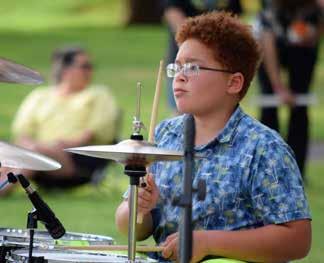
The Walla Walla Symphony has free and low-cost music programs for learning, playing, and connecting in our community and schools.
● Walla Walla Symphony Youth Orchestra (WWSYO) Grades 8-12
Through weekly rehearsals and seasonal concerts, young musicians grow their skills, connect with peers, and share their music with the community.
● SPARK! Composition Course Grades 3-12
Students explore their creativity through composition, receive oneon-one guidance from a professional composer, and share their original music in a supportive online community.
● Rock Camp Grades 7-12
In partnership with the Walla Walla Music Organization, young musicians spend a week developing their skills, collaborating with peers, learning from professionals, and performing in a live concert for the community.
● Instrument Lending Library
Students can borrow instruments at no cost, making it possible to begin or continue their music journey. Community donations of unused instruments keep the library stocked for the next generation of musicians.
● Traveling Instrument Petting Zoo
The Traveling Instrument Petting Zoo lets children try out real instruments in familiar community spaces, igniting curiosity and opening the door to future music-making.
● Family Concerts
Family Concerts create welcoming spaces where young listeners and their families can explore the joy of live music in a relaxed and engaging setting.
● Link Up
Carnegie Hall’s Link Up program invites 3rd–5th graders to make music in the classroom, then join the Symphony in a live concert, which is often their very first symphony experience.
Together, these programs make music accessible to young people of all ages, nurturing creativity, building confidence, and strengthening our community through music.
Learn more and get involved at wwsymphony.org/education-community or scan the QR code.
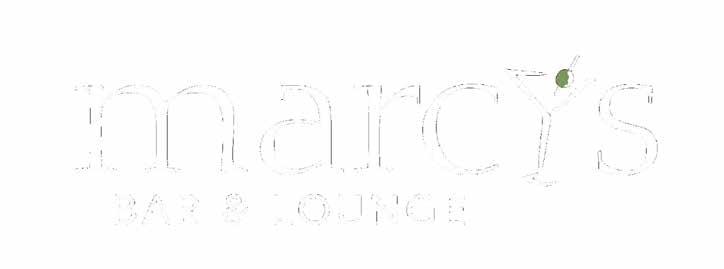
After




